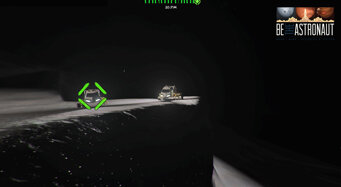Mining on the moon
Be the Astronaut introduces the primary concepts involved with 21st century space exploration – and it's especially appealing to kids ages 5-15.
One of these concepts -- “In-Situ Resource Utilization” (ISRU) -- is likely to play a pivotal role in future exploration of the solar system, and it all boils down to simple physics and economics. Creating resources on the Moon (or from asteroids like Bennu) will be far easier, cheaper and safer than launching them out of Earth orbit.
The Moon’s north and south poles are shrouded in darkness and pockmarked with craters (some miles deep). These areas harbor valuable resources in the form of ice that can be turned into vital fuel, water, and oxygen. Yet the Moon has no atmosphere, its gravity is a mere fraction of Earth’s, and it has huge temperature variations and other harsh conditions. So how might you access, mine, utilize and transport these potential resources?
Be the Astronaut first presents these concepts and challenges in a 2-D game – in the SCI station. Then at the FLY station - a high definition 3D simulation - you drive a lunar rover in 1/6 gravity down a steep haul road into the Peary and Whipple craters, full of switchbacks and other potential hazards.
You reach an ISRU Facility with structures designed for hospitable living conditions. (In fact, structures like these may eventually be created with 3D printing from lunar regolith – the dust, soil and rock that cover the Moon’s surface.)
These are a few of Eureka Exhibits' sketches and storyboards which show the creative process of constructing a virtual haul road, and this video shows the driving approach to the ISRU facility.
ISRU
After descending a steep lunar haul road into the Peary and Whipple craters, the Rover approaches the In-Situ Resource Utilization facility:











